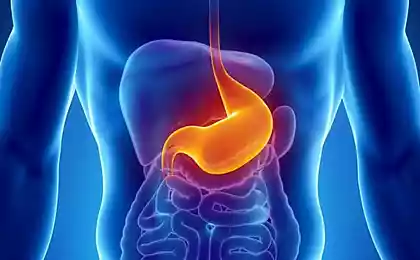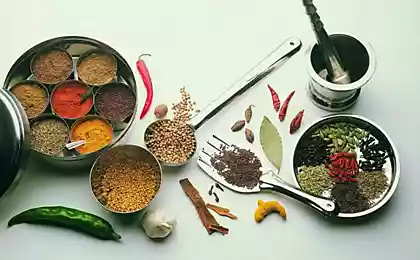938
12 amazing facts about your digestive system
A selection of interesting information
The digestive system has two main functions: the conversion of food into nutrients needed by the body, and the body from getting rid of waste. The proper functioning of the digestive system interacts with a number of different organs throughout the body - oral, stomach, intestines, liver and gall bladder. Before you 12 facts about the digestive system that may surprise you.
1. Food not need gravity to reach zheludka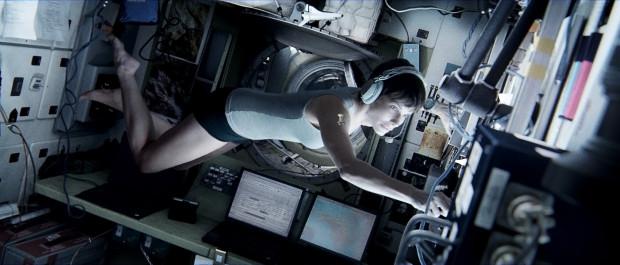
When you eat something, the food is not just fall through the esophagus into the stomach: esophagus muscles contract and relax - the wavelike contractions called peristalsis, so the food is pushed through a small channel down to the stomach. Thanks peristalsis, even if you have, hanging upside down, will be able to get food into the stomach.
2. Laxatives receive signals from the digestive sistemy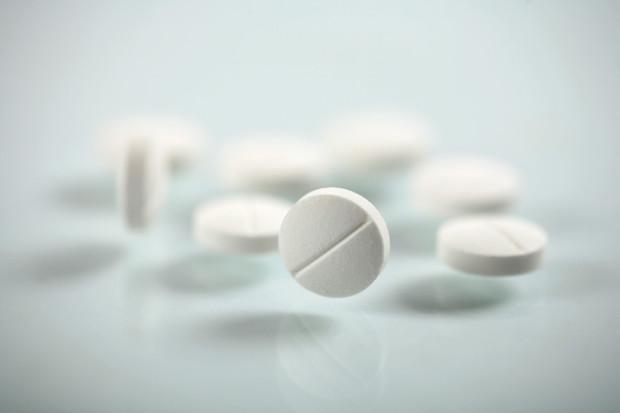
Laxatives often contain several different classes of enzymes including proteases, amylases and lipases. The human digestive system also contains these enzymes.
The digestive system uses these types of enzymes to dissolve the food: proteases break down proteins, amylase - carbohydrates, and lipase - fats. For example, your saliva contains amylase and lipase, and your stomach and small intestine using protease.
3. Most of the food is not digested in the stomach
It is believed that the stomach is the center of the digestive system. This body does play a big role in "mechanical digestion" - it takes a large amount of food and mixes it with gastric juice, physically breaking down food into components and turning it into a thick paste called chyme.
Stomach but rather takes a small part in the chemical expansion - processes that reduce food to molecular size, it is necessary to hit the nutrients into the circulation.
Most of the process of digestion and nutrient absorption occur in the small intestine, it is about two-thirds the length of the gastrointestinal tract. After further destruction chyme powerful enzymes, the small intestine absorbs nutrients and sends them into the bloodstream.
4. The surface area of the small intestine is huge
The length of the small intestine is approximately seven meters and width - about 2, 5 cm in diameter. Based on these measurements it can decide that the surface area of the small intestine is about 0, 6 m². In fact, its area - about 250 m2, which is comparable to the area of a tennis court.
The small intestine has three features that increase its surface area. Intestinal walls have folds and contain structures called villi - fingerlike projections absorbent tissue. Moreover, the villi are covered with microscopic projections - microvilli. All these features allow the small intestine to digest food better.
5. Stomachs animals raznye
The stomach is an integral part of the digestive system, but it looks different animals in different ways. Some animals have stomachs with multiple compartments: cows and other ruminant animals - giraffes, deer and cattle - Four-chamber stomachs that helps them to digest plant food.
And some species, such as sea horses, lungfish and platypuses, stomach, not at all, and the food comes directly from the esophagus to the intestine straight.
6. Intestinal gases unpleasant smell because bakteriy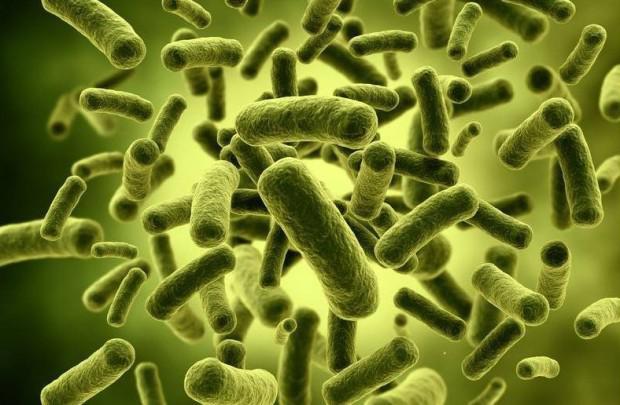
Intestinal gases are a combination of air and absorbed gases emerging through fermentation of bacteria in the gastrointestinal tract. The digestive system can not absorb only certain components of food - some substances simply fall into the large intestine, where they begin to work hordes of intestinal bacteria, highlighting various gases, including carbon dioxide, hydrogen, methane and hydrogen sulfide.
7. The digestive system is prone to raku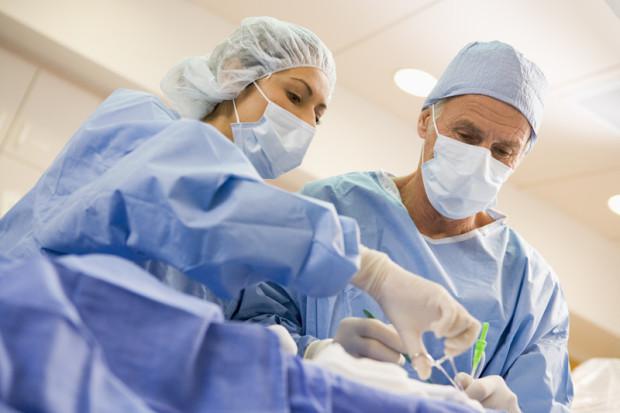
Every year more than 270-thousand Americans are turning to hospitals, their diagnosis - cancer of the gastrointestinal tract, including cancer of the esophagus, stomach, colon and bowel directly. About half of these cases lead to death. In 2009, the US died from colorectal cancer nearly 52 thousand people, the largest number of deaths from cancer except lung cancer.
8. sword-swallower helped scientists to look into zheludok
The endoscope - a tool used to study and organs within the body cavity. German physician Philipp Bozzini in the early 1800s developed a primitive version of the endoscope, called laytleyter designed to test a number of areas of the body, including the ear, nose and urethra.
Half a century later, the French surgeon Jean Antoine Desormes developed another tool for the study of the urinary tract and bladder, which he called "an endoscope».
In 1868, the year the German physician Adolf Kussmaul used an endoscope to the first time to look inside the stomach of a living person. Unlike today endoscope instrument Kussmaul was not flexible, so that it was difficult to control. Therefore Kassmaul used the experience of sword-swallower who can easily swallow a sword length of about 47 cm and a width of 1 to 3 cm - that this size was developed by him device.
9. A man with a hole in his stomach helped doctors in the study pischevareniya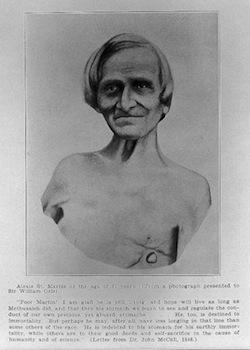
In 1822, the year a hunter accidentally shot a 19-year-old man named Alexis St. Martin. Army surgeon William Beaumont cured victim, leaving, however, the hole in the abdominal cavity, called a fistula. This fistula allowed Beaumont to explore the stomach completely new way.
Over the next decade Beaumont conducted experiments on 238 Saint-Martin, some of them suggested the introduction of food directly into the stomach of the patient. Beaumont has made a number of important conclusions from their work, for example, that can affect digestion fever, and that digestion - it is something more than just grinding food in the stomach to digest requires hydrochloric acid.
10. The stomach has to defend himself from himself zhe
The cells along the inner wall of the stomach to secrete approximately two liters of hydrochloric acid on a daily basis, which helps kill bacteria and helps digestion. Organism is hydrochloric acid is typically used in a variety of means for removing rust and oxide scale from steel surfaces, and is also found in some detergents, including a cleaner for toilets.
To protect yourself from the caustic acid of the stomach wall are covered with a thick layer of mucus, but the mucus can not protect the stomach for an indefinite period, so that the stomach every two weeks "update" this layer.
11. Doctors treated ulcer wrong for almost stoletiya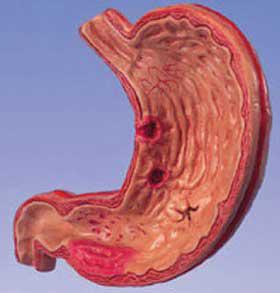
Peptic ulcer - is sores on the mucosa of the stomach, esophagus or the small intestine. According to a study of 2007, from the disease each year is shown at 50 million people in the US alone.
Doctors long believed that the causes of peptic ulcer disease are stress and spicy foods. This explanation made sense, since patients often complained of acute pain just after taking spicy food, so for almost 100 years, doctors prescribed course of treatment in the form of rest and light diet.
In 1982, Australian scientists Barry Marshall and Robin Warren discovered that ulcer occurs because the bacterium Helicobacter Pylori, intruding in the gastric mucosa. Thanks to this discovery, doctors have come up with the best treatment of ulcers - antibiotics.
This discovery brought Marshall and Warren Nobel Prize in Physiology or Medicine in 2005, the year.
12. Rumbling in the stomach may hear, at any time, not just when a person goloden
So-called stomach rumble - the result of peristalsis of the stomach and small intestine. In other words, this is evidence of the normal digestion of food, which occurs when food, liquids and gases pass through your digestive tract. When the digestive tract is empty, the sound louder because there is nothing that can make him drown.
But why do muscles contract when the digestive tract is nothing?
After the contents of the stomach into the small intestine, the digestive system sends signals to the brain, as it reacts, muscles begin speaking digestive peristalsis process. Muscle contraction needed to remain in the stomach of excess food is not - as a result, and is distributed "false" signal that the body needs food.
via factroom.ru
The digestive system has two main functions: the conversion of food into nutrients needed by the body, and the body from getting rid of waste. The proper functioning of the digestive system interacts with a number of different organs throughout the body - oral, stomach, intestines, liver and gall bladder. Before you 12 facts about the digestive system that may surprise you.
1. Food not need gravity to reach zheludka

When you eat something, the food is not just fall through the esophagus into the stomach: esophagus muscles contract and relax - the wavelike contractions called peristalsis, so the food is pushed through a small channel down to the stomach. Thanks peristalsis, even if you have, hanging upside down, will be able to get food into the stomach.
2. Laxatives receive signals from the digestive sistemy

Laxatives often contain several different classes of enzymes including proteases, amylases and lipases. The human digestive system also contains these enzymes.
The digestive system uses these types of enzymes to dissolve the food: proteases break down proteins, amylase - carbohydrates, and lipase - fats. For example, your saliva contains amylase and lipase, and your stomach and small intestine using protease.
3. Most of the food is not digested in the stomach
It is believed that the stomach is the center of the digestive system. This body does play a big role in "mechanical digestion" - it takes a large amount of food and mixes it with gastric juice, physically breaking down food into components and turning it into a thick paste called chyme.
Stomach but rather takes a small part in the chemical expansion - processes that reduce food to molecular size, it is necessary to hit the nutrients into the circulation.
Most of the process of digestion and nutrient absorption occur in the small intestine, it is about two-thirds the length of the gastrointestinal tract. After further destruction chyme powerful enzymes, the small intestine absorbs nutrients and sends them into the bloodstream.
4. The surface area of the small intestine is huge
The length of the small intestine is approximately seven meters and width - about 2, 5 cm in diameter. Based on these measurements it can decide that the surface area of the small intestine is about 0, 6 m². In fact, its area - about 250 m2, which is comparable to the area of a tennis court.
The small intestine has three features that increase its surface area. Intestinal walls have folds and contain structures called villi - fingerlike projections absorbent tissue. Moreover, the villi are covered with microscopic projections - microvilli. All these features allow the small intestine to digest food better.
5. Stomachs animals raznye

The stomach is an integral part of the digestive system, but it looks different animals in different ways. Some animals have stomachs with multiple compartments: cows and other ruminant animals - giraffes, deer and cattle - Four-chamber stomachs that helps them to digest plant food.
And some species, such as sea horses, lungfish and platypuses, stomach, not at all, and the food comes directly from the esophagus to the intestine straight.
6. Intestinal gases unpleasant smell because bakteriy

Intestinal gases are a combination of air and absorbed gases emerging through fermentation of bacteria in the gastrointestinal tract. The digestive system can not absorb only certain components of food - some substances simply fall into the large intestine, where they begin to work hordes of intestinal bacteria, highlighting various gases, including carbon dioxide, hydrogen, methane and hydrogen sulfide.
7. The digestive system is prone to raku

Every year more than 270-thousand Americans are turning to hospitals, their diagnosis - cancer of the gastrointestinal tract, including cancer of the esophagus, stomach, colon and bowel directly. About half of these cases lead to death. In 2009, the US died from colorectal cancer nearly 52 thousand people, the largest number of deaths from cancer except lung cancer.
8. sword-swallower helped scientists to look into zheludok

The endoscope - a tool used to study and organs within the body cavity. German physician Philipp Bozzini in the early 1800s developed a primitive version of the endoscope, called laytleyter designed to test a number of areas of the body, including the ear, nose and urethra.
Half a century later, the French surgeon Jean Antoine Desormes developed another tool for the study of the urinary tract and bladder, which he called "an endoscope».
In 1868, the year the German physician Adolf Kussmaul used an endoscope to the first time to look inside the stomach of a living person. Unlike today endoscope instrument Kussmaul was not flexible, so that it was difficult to control. Therefore Kassmaul used the experience of sword-swallower who can easily swallow a sword length of about 47 cm and a width of 1 to 3 cm - that this size was developed by him device.
9. A man with a hole in his stomach helped doctors in the study pischevareniya

In 1822, the year a hunter accidentally shot a 19-year-old man named Alexis St. Martin. Army surgeon William Beaumont cured victim, leaving, however, the hole in the abdominal cavity, called a fistula. This fistula allowed Beaumont to explore the stomach completely new way.
Over the next decade Beaumont conducted experiments on 238 Saint-Martin, some of them suggested the introduction of food directly into the stomach of the patient. Beaumont has made a number of important conclusions from their work, for example, that can affect digestion fever, and that digestion - it is something more than just grinding food in the stomach to digest requires hydrochloric acid.
10. The stomach has to defend himself from himself zhe

The cells along the inner wall of the stomach to secrete approximately two liters of hydrochloric acid on a daily basis, which helps kill bacteria and helps digestion. Organism is hydrochloric acid is typically used in a variety of means for removing rust and oxide scale from steel surfaces, and is also found in some detergents, including a cleaner for toilets.
To protect yourself from the caustic acid of the stomach wall are covered with a thick layer of mucus, but the mucus can not protect the stomach for an indefinite period, so that the stomach every two weeks "update" this layer.
11. Doctors treated ulcer wrong for almost stoletiya

Peptic ulcer - is sores on the mucosa of the stomach, esophagus or the small intestine. According to a study of 2007, from the disease each year is shown at 50 million people in the US alone.
Doctors long believed that the causes of peptic ulcer disease are stress and spicy foods. This explanation made sense, since patients often complained of acute pain just after taking spicy food, so for almost 100 years, doctors prescribed course of treatment in the form of rest and light diet.
In 1982, Australian scientists Barry Marshall and Robin Warren discovered that ulcer occurs because the bacterium Helicobacter Pylori, intruding in the gastric mucosa. Thanks to this discovery, doctors have come up with the best treatment of ulcers - antibiotics.
This discovery brought Marshall and Warren Nobel Prize in Physiology or Medicine in 2005, the year.
12. Rumbling in the stomach may hear, at any time, not just when a person goloden

So-called stomach rumble - the result of peristalsis of the stomach and small intestine. In other words, this is evidence of the normal digestion of food, which occurs when food, liquids and gases pass through your digestive tract. When the digestive tract is empty, the sound louder because there is nothing that can make him drown.
But why do muscles contract when the digestive tract is nothing?
After the contents of the stomach into the small intestine, the digestive system sends signals to the brain, as it reacts, muscles begin speaking digestive peristalsis process. Muscle contraction needed to remain in the stomach of excess food is not - as a result, and is distributed "false" signal that the body needs food.
via factroom.ru




